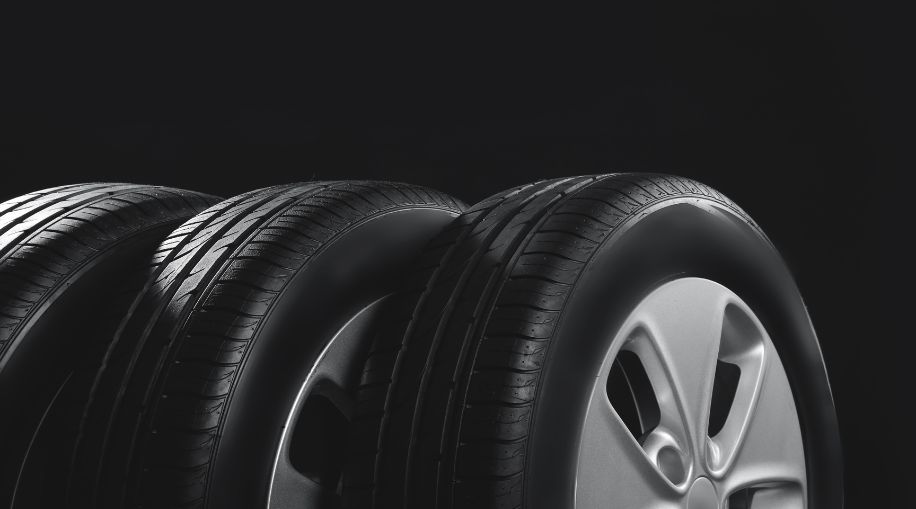Rubber Realities
What Size Tires Fit My Car?
Tires play a crucial role in the performance and safety of your vehicle. Yet, understanding tire sizes can be daunting for many car owners. With a plethora of options and jargon like aspect ratio and wheel fitment, choosing the right tire size may seem like deciphering a secret code. If you wonder, “What size tires fit my car?” this comprehensive guide is exactly what you need. We will demystify tire sizes and explore how to select the perfect set of wheels for your vehicle.
The Basics of Tire Sizing
Before delving into the specifics, let's grasp the fundamentals of tire sizing. You'll notice a series of numbers and letters when you look at a tire's sidewall. These alphanumeric characters hold the key to understanding the tire's dimensions and capabilities. A typical tire size might look like this: P215/60R16.
Let's break down this example:
- P: This stands for "P-Metric," indicating that the tire is designed for passenger vehicles. If you see "LT" instead, it signifies that the tire is for light trucks.
- 215: This number represents the tire's width in millimeters. In this case, the tire is 215 millimeters wide.
- 60: The aspect ratio is expressed as a percentage and indicates the tire's height compared to its width. An aspect ratio of 60 means the tire's height is 60% of its width.
- R: This letter indicates the tire's construction type. "R" stands for radial, which is the most common type in modern tires.
- 16: This is the diameter of the wheel, measured in inches. In this example, the tire is designed to fit a 16-inch wheel.
Related Search Topics (Ads)
The Role of Tire Size
Now that we've deciphered the code, let's explore the significance of these numbers and how they impact your driving experience.
Width (215 in P215/60R16)
The first number in the tire size, which is the width in millimeters, plays a crucial role in handling and stability. Wider tires often provide better grip on the road, enhancing cornering and braking performance. However, they may also increase rolling resistance, affecting fuel efficiency.
Aspect Ratio (60 in P215/60R16)
The aspect ratio indicates the tire's height relative to its width. A lower aspect ratio, such as 60%, means the tire has a lower sidewall and a more "low-profile" appearance. Low-profile tires are often associated with sportier handling and improved responsiveness. On the other hand, tires with a higher aspect ratio offer a more comfortable ride and better absorption of road imperfections.
Diameter (16 in P215/60R16)
The wheel's diameter, measured in inches, must match the tire's diameter. A larger wheel diameter can improve handling and give your vehicle a more stylish appearance. Conversely, smaller wheels can provide a smoother and quieter ride.
Selecting the Right Tire Size
Now that you understand the basics of tire sizing, how do you choose the right size for your vehicle? The answer lies in your car's manufacturer recommendations, usually found in the owner's manual or on a sticker inside the driver's door jamb. These specifications are carefully chosen to optimize your car's performance, fuel efficiency and safety.
Seasonal Considerations: Winter, Summer and All-Season Tires
Beyond size, the type of tire you choose plays a significant role in your driving experience and safety. Tire types can broadly be categorized into three main categories: winter, summer and all-season tires.
Winter Tires
Winter tires, also known as snow tires, are specifically designed for cold weather conditions. They feature a rubber compound that remains pliable in low temperatures, enhancing grip on snowy and icy roads. The tread pattern of winter tires is designed to bite into snow and provide better traction. If you live in an area with harsh winter conditions, consider switching to winter tires during the colder months for improved safety.
Summer Tires
Summer tires are engineered for warm weather performance. They offer excellent grip on dry and wet roads, making them ideal for driving in the spring and summer months. Summer tires, however, may not perform well in cold or snowy conditions, so they are best used in regions with milder climates.
All-Season Tires
All-season tires aim to provide a balance between summer and winter tire characteristics. They are designed to perform adequately in a variety of weather conditions, making them a popular choice for many drivers. While they may not excel in extreme winter conditions or high-performance driving situations, all-season tires offer convenience and versatility.
When selecting tires, consider your local climate, driving habits and the conditions you are likely to encounter. For maximum safety and performance, some drivers opt for a dedicated set of winter tires for the cold months and switch to summer or all-season tires during the rest of the year. This is generally needed in places with extremely cold weather since all-season tires can only withstand so much ice and snow.
On the Right Track
Overall, tire sizing may seem like rocket science to some, but the information the average driver needs can be found in their owner’s manual. If you require further information, referring to a tire size chart can help you find the correct tire measurements for your vehicle model. Finally, remember to consult an expert when in doubt to keep you and others safe on the road!
Do you need a car to put your new tires on? Check out the most affordable electric vehicles.

